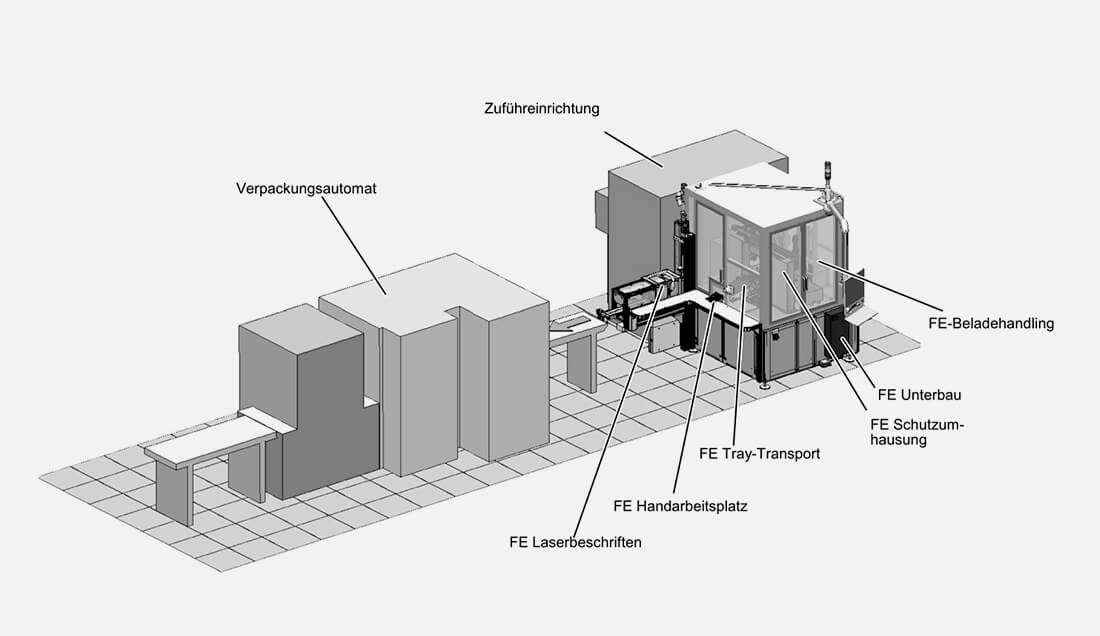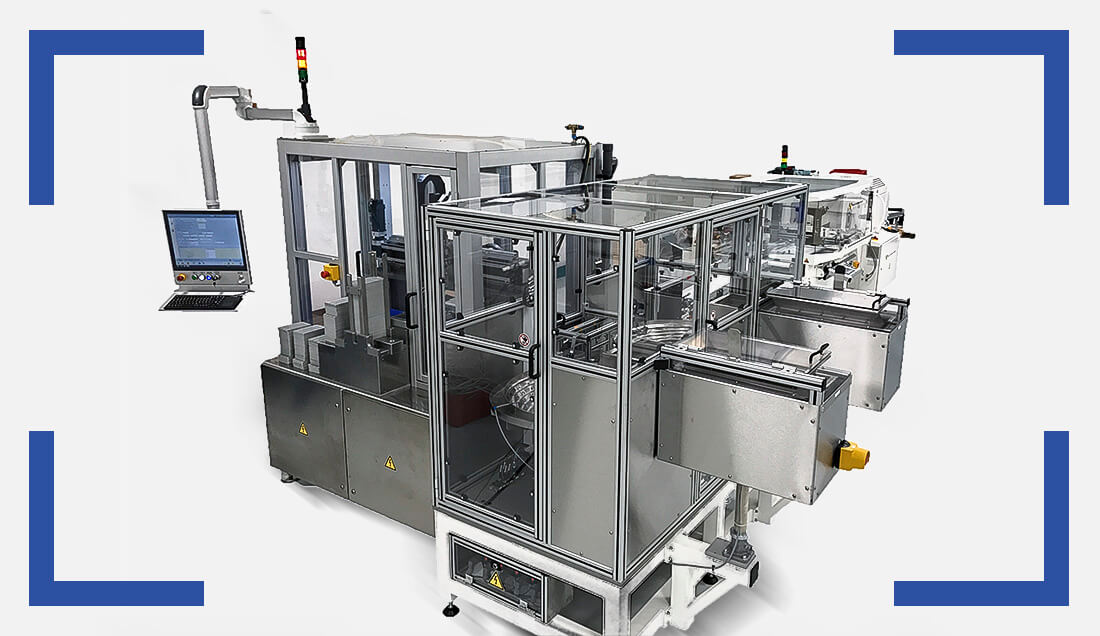Disposables – Pipette tips, reaction tubes or cuvettes
Automation solution for in-vitro diagnostics
Millions of disposables – tips, cups or pipettes – are needed and used every day for analytical purposes in medical and pharmaceutical as well as in non-medical areas – a growing market with an enormous need for automation. Increasing demand increases the need for fully and semi-automated production solutions in the disposables industry. MA micro automation GmbH recently implemented another flexible tip automation solution with an increased output rate for a global player.
Starting position
The tips were produced free fall by the customer on injection moulding machines and sold as bulk material to the end customer for analysis purposes. The scope of the project was to implement a flexible tip automation solution for tip production in which the tips packed in racks can be offered to the in-vitro diagnostics market. For this purpose, the individual tips must be fed in a cycle time of less than 0.1 sec. per tip of bulk material, separated, automatically inserted into racks and then packed.

Process flow
The operator manually fills the feeding device at two bunkers with tips in the form of bulk material. A vibrating movement transports the tips with a defined conveying speed and quantity into two round conveyors. During the entire feeding and separation process, the parts are ionised to counteract electrostatic charging. The round conveyors are multi-track and convey the tips in two layers into the feed rails. There the tips hang themselves independently on the collar by means of their part geometry and gravity. A linear conveying movement transports the tips via the feed rails to the singling screen. The desired rack grid dimension is created with the singling screen. From there, the tips are transferred fully automatically into the rack by a multi-gripper system via electromechanical linear handling. Prior to this, the automation separates the racks and feeds them to the insertion / transfer process.
The fully loaded rack is discharged from the machine, packed manually in a folding box and transferred to the automatic laser marking and packaging process. At the end of the process chain, the packed and wrapped racks are buffered on a storage line before they are manually packed into shipping cartons.

Plant characteristics
- Feeding equipment consisting of two bunkers with round conveyors
- Five-track longitudinal vibratory conveyor rail
- Electromechanical Y-, Z-transformation handling
- Integration of a CO2 marking laser & a fine film packaging machine
Technical Specifications
- Dimensions (L x W x H): 10,200 mm x 3,500 mm x 2,500 mm
- Clean room class: ISO Class 8
- Handling time: 10 seconds per rack
- Cycle time: 0.095 seconds per tip
- Technical availability: up to 99 % (proven by the customer for SAT acceptance)
- OEE: up to 98 % (proven by the customer for SAT acceptance)
- Scalability with regard to tip size
- Product-adaptable grippers
